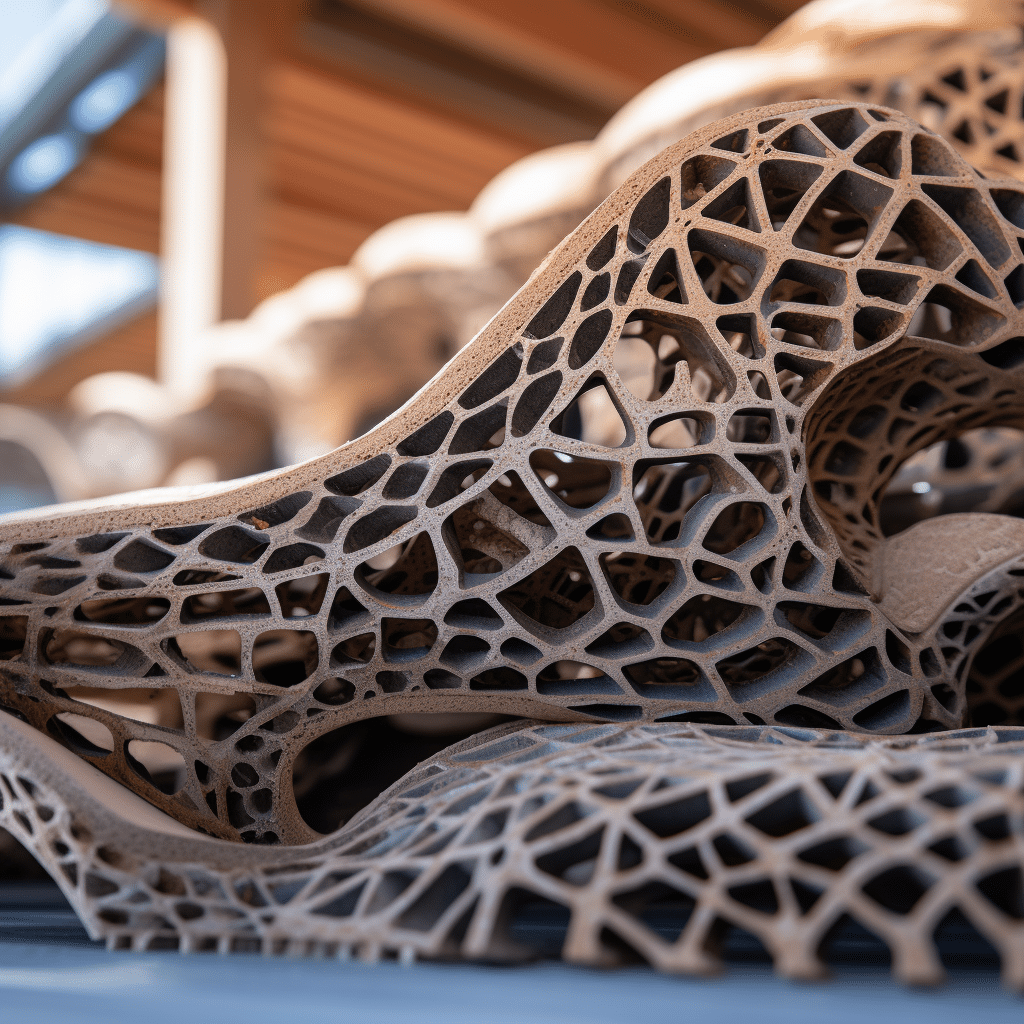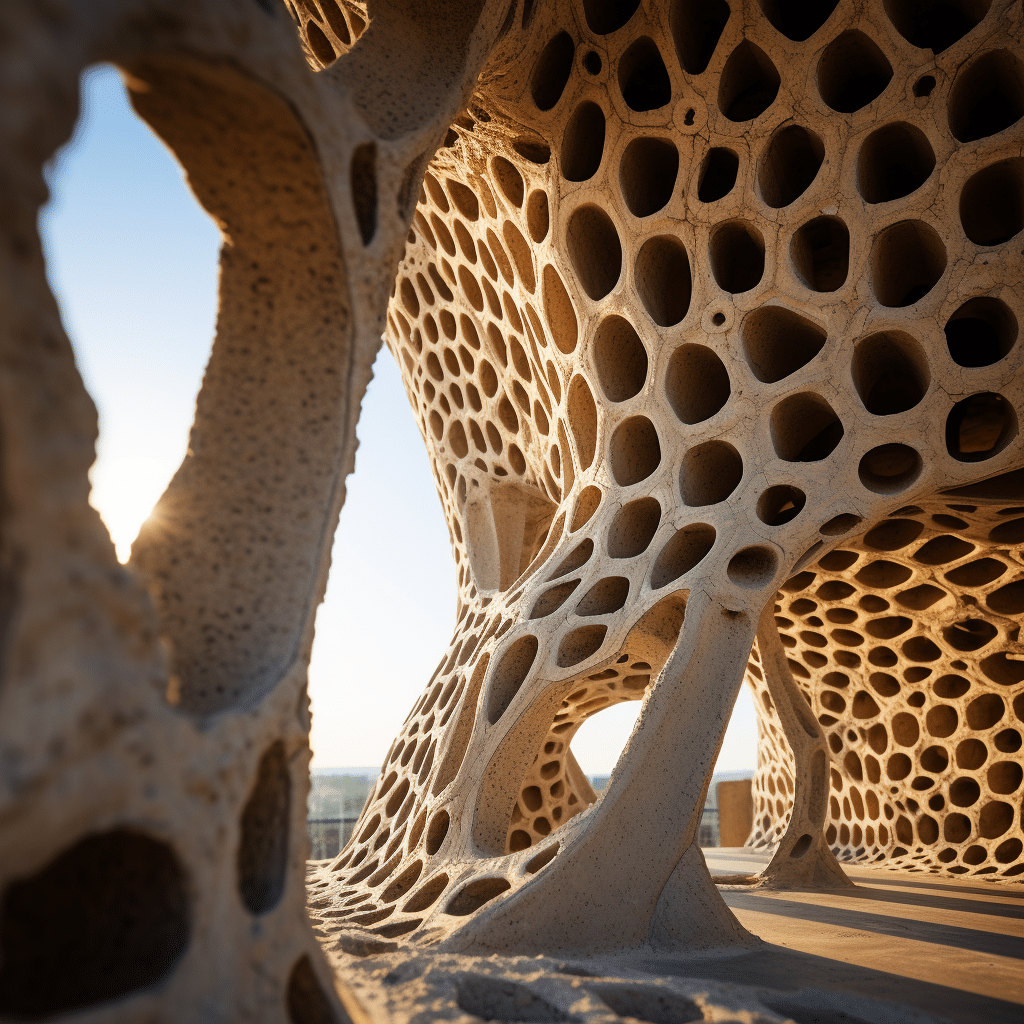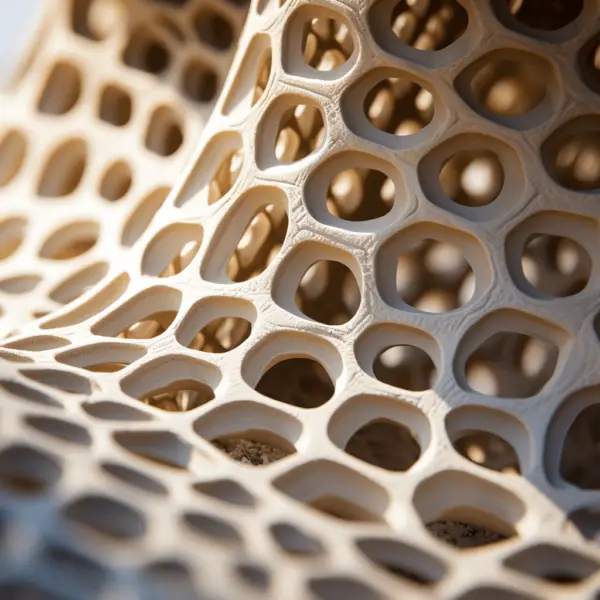Breathable Building Materials: Advancing Sustainable Construction
Breathable building materials are revolutionizing the construction industry, offering numerous benefits for sustainable construction projects in the US. These materials are designed to allow for the exchange of air and moisture between the building and its surroundings, promoting better indoor air quality and reducing the risk of moisture-related issues such as mold growth. In this article, we will explore the advancements in breathable building materials, their applications, and their impact on sustainable construction in the US.
Key Takeaways:
- Breathable building materials promote better indoor air quality and reduce the risk of moisture-related issues.
- These materials play a crucial role in creating healthier construction practices and supporting energy-efficient building.
- Benefits of breathable building materials include improved air quality, humidity regulation, and sustainability.
- They are used in various applications, such as energy-efficient homes, sustainable commercial buildings, and historic building restoration.
- Advancements in breathable building materials include new technologies and renewable materials.
The Importance of Breathable Building Materials for Healthy Construction

Breathable building materials are essential for promoting healthy construction practices, prioritizing the well-being of building occupants. These materials play a crucial role in creating indoor environments with better air quality, as they allow for the natural exchange of air and moisture. By facilitating proper airflow, breathable materials help to prevent the buildup of pollutants and maintain a comfortable living or working environment.
One of the key benefits of using breathable building materials is their ability to regulate humidity levels. By allowing moisture to escape, these materials reduce the risk of mold growth and other moisture-related issues. This is especially important in regions with high humidity or areas prone to heavy rainfall. Breathable materials contribute to the overall sustainability of the construction industry by supporting energy-efficient building practices, as they help to reduce the energy consumption required to maintain a comfortable indoor environment.
By incorporating breathable building materials into construction projects, builders and architects can create spaces that prioritize occupant health and well-being. These materials promote better indoor air quality, minimize the risk of moisture-related issues, and contribute to the sustainability of the built environment. As the construction industry continues to prioritize sustainable practices, the use of breathable building materials is becoming increasingly popular in the United States.
The Importance of Proper Installation and Maintenance
While breathable building materials offer numerous benefits, it is essential to ensure proper installation and maintenance to optimize their performance. Following manufacturer guidelines and best practices is crucial to avoid potential issues such as leaks or inadequate moisture control. Regular inspection and maintenance are important to ensure the long-term effectiveness of breathable materials and to address any potential repairs or replacements promptly.
The Benefits of Breathable Building Materials
It offer a wide range of benefits for construction projects. Firstly, they promote better indoor air quality by allowing for the natural exchange of air and moisture, preventing the buildup of harmful pollutants and maintaining a comfortable living environment. When compared to traditional materials, breathable building materials provide enhanced ventilation, reducing the concentration of airborne allergens and improving overall respiratory health.
Secondly, breathable materials help to regulate humidity levels, reducing the risk of mold growth and other moisture-related issues. By allowing moisture to escape, these materials prevent the accumulation of dampness, which can lead to the growth of mold and mildew. This not only protects the structural integrity of the building but also safeguards the health of its occupants.
Additionally, breathable building materials are often made from sustainable and eco-friendly sources.This contributes to the overall sustainability of the construction industry by minimizing environmental impact and promoting greener building practices.
Table: Benefits of Breathable Building Materials
| Benefits | Description |
|---|---|
| Better indoor air quality | Allows for the exchange of air and moisture, reducing the concentration of pollutants |
| Regulates humidity levels | Prevents moisture buildup and reduces the risk of mold growth |
| Sustainable and eco-friendly | Made from renewable materials, minimizing environmental impact |
The benefits of using breathable building materials in construction projects cannot be overstated. From improved indoor air quality to enhanced moisture control and sustainability, these materials offer a holistic approach to healthier and more environmentally friendly construction practices. By incorporating breathable building materials into their projects, builders and architects are paving the way for a more sustainable future in the construction industry.
Applications of Breathable Building Materials in Construction
Offering innovative solutions in various projects. These materials are versatile and can be used in different construction types, helping to create healthier and more sustainable buildings.
One prominent application of breathable building materials is in the construction of energy-efficient homes. These materials are used to create a tight building envelope that allows for proper airflow and moisture control. By using breathable materials in the construction process, builders can ensure better indoor air quality and reduce the risk of moisture-related issues.
It also find application in the construction of sustainable commercial buildings. In these projects, these materials contribute to creating a healthier and more comfortable working environment for employees and visitors. By promoting good indoor air quality and moisture management, breathable materials support the overall sustainability goals of commercial buildings.
Furthermore, breathable materials play a crucial role in the restoration and renovation of historic buildings. These materials allow for the preservation of the building’s original materials while providing effective moisture management. The use of breathable building materials in historic restoration projects helps maintain the authenticity of the structure while ensuring its long-term durability.
Table: Examples of Applications of Breathable Building Materials
| Application | Description |
|---|---|
| Energy-Efficient Homes | Breathable materials create a tight building envelope for optimal airflow and moisture control, reducing energy consumption. |
| Sustainable Commercial Buildings | Breathable materials contribute to healthier indoor environments, supporting sustainability efforts in commercial construction. |
| Historic Building Restoration | Breathable materials allow for the preservation of original materials while providing effective moisture management for long-term durability. |
These are just a few examples of the applications of breathable building materials in construction. The versatility and benefits of these materials make them an excellent choice for sustainable and healthy building practices.
Advancements in Breathable Building Materials
The field of witnessed significant advancements and innovations in recent years. Researchers and manufacturers are constantly working towards developing materials and technologies that offer improved breathability, durability, and sustainability. These advancements are essential in meeting the growing demand for healthier and more sustainable construction practices.
One notable advancement is the development of air-permeable membranes, such as Outdoor Research’s AscentShell or The North Face’s FUTURELIGHT. These membranes provide better moisture management and increased breathability, allowing for improved indoor air quality and reduced risk of moisture-related issues. These advanced membranes have become popular choices in construction projects, particularly for creating energy-efficient homes and sustainable commercial buildings.
I believe these advancements in breathable building materials have opened up new possibilities for architects and builders. We can now create spaces that prioritize both the health of the occupants and the environment. The use of these advanced materials not only enhances indoor air quality but also contributes to overall energy efficiency, making them a win-win solution for sustainable construction.
In addition to membrane technologies, there have been significant innovations in the use of renewable materials like bamboo and hemp. These materials offer excellent breathability while being environmentally friendly and sustainable. Incorporating renewable materials into construction projects helps reduce the carbon footprint and promotes a more circular economy.
Advancements in Breathable Building Materials:
- Development of air-permeable membranes for better moisture management
- Innovations in renewable materials like bamboo and hemp
- Enhanced durability and sustainability
- Improved indoor air quality and energy efficiency
The advancements are reshaping the construction industry by providing architects and builders with innovative solutions that prioritize health, sustainability, and energy efficiency. As the demand for sustainable construction continues to rise, we can expect further advancements and breakthroughs in the field of leading to even more environmentally responsible and healthier built environments.
| Advancement | Description |
|---|---|
| Air-permeable membranes | Advanced membranes like AscentShell and FUTURELIGHT offer improved moisture management and breathability. |
| Renewable materials | Innovations in using bamboo and hemp provide breathable options that are sustainable and eco-friendly. |
| Durability and sustainability | The advancements in breathable building materials have led to increased durability and sustainability, ensuring long-lasting and environmentally responsible structures. |
| Indoor air quality and energy efficiency | These advancements contribute to better indoor air quality and enhanced energy efficiency, creating healthier and more sustainable living environments. |
The Role of Regulations and Standards in the Use of Breathable Building Materials
Breathable construction materials are regulated to assure safety and efficacy. These requirements are essential for building integrity and sustainability. A important rule is 2021 IRC Section R702.7, which governs above-grade wall vapor retarders and barriers. It sets permeance levels for different materials and recommends their wall assembly placement by climate zone.
ASTM E1745, which specifies below-slab vapor retarder and barrier performance, is also crucial. By setting performance and durability standards, these standards ensure breathable materials satisfy performance requirements.
Architects, builders, and contractors need norms and standards to choose, install, and maintain breathable construction materials. Following these standards, experts can build high-quality buildings with excellent interior air quality, moisture control, and sustainability.
| Regulation/Standard | Guidelines |
|---|---|
| 2021 IRC Section R702.7 | – Specifies vapor retarder and barrier usage – Defines permeance levels and placement based on climate zones |
| ASTM E1745 | – Performance requirements for below-slab vapor retarders and barriers |
Environmental Impact of Breathable Building Materials
Breathable building materials have a significant positive environmental impact, making them a sustainable choice for construction projects.
The energy efficiency and moisture control offered by breathable building materials also have a positive environmental effect. These materials help regulate humidity levels, reducing the risk of mold growth and other moisture-related issues.
“Breathable building materials have the potential to transform the construction industry to a more sustainable and environmentally responsible sector.” – Environmental Consultant
Improve indoor air quality, making homes and offices healthier. These materials prevent pollutant buildup by allowing air and moisture to exchange, reducing the need for chemical-based air purifiers and the environmental impact of indoor air purification.
The Environmental Benefits of Breathable Building Materials
In summary, breathable building materials offer several environmental benefits. Renewable materials, lower carbon footprints, energy efficiency, mold prevention, and indoor air quality are their benefits. Contractors and architects may reduce environmental impact and create healthier, more sustainable spaces by using these materials.
| Environmental Benefits of Breathable Building Materials |
|---|
| Reduces reliance on non-renewable resources |
| Lower carbon footprint |
| Energy efficiency |
| Prevents mold growth and moisture-related issues |
| Promotes better indoor air quality |
Challenges and Considerations in the Use of Breathable Building Materials
It offers numerous benefits, it also presents some challenges and considerations that need to be addressed. One of the main challenges is ensuring proper installation and maintenance. To achieve optimal performance, it is crucial to follow manufacturer guidelines and best practices. This includes ensuring a proper seal to prevent leaks and adequate moisture control to prevent the growth of mold or other moisture-related issues.
These materials may be more expensive compared to traditional options. However, it is important to note that the long-term benefits and energy savings they offer can outweigh the initial investment. By reducing the risk of moisture-related damages and improving energy efficiency, breathable materials can help lower maintenance and operational costs in the long run.
When selecting breathable materials, it is essential to consider the specific climate and environmental conditions of the construction site. Different materials may perform differently depending on factors such as temperature, humidity levels, and exposure to the elements.
Key Challenges and Considerations in the Use of Breathable Building Materials

- Proper installation and maintenance to ensure optimal performance
- The initial cost compared to traditional materials
- Consideration of specific climate and environmental conditions
“The use of breathable building materials presents some challenges, but when properly addressed, these materials can offer significant benefits for construction projects.”
| Challenges | Considerations |
|---|---|
| Proper installation and maintenance | Follow manufacturer guidelines and best practices |
| Initial cost | Long-term benefits and energy savings |
| Climate and environmental conditions | Select materials suitable for specific conditions |
Conclusion
Breathable building materials have revolutionized sustainable and healthy construction. These air-and-moisture-exchanging materials improve indoor air quality, eliminate moisture concerns, and boost energy efficiency.
Builders and architects may prioritize occupant health and create healthier living and working spaces by using breathable building materials. Since they use renewable resources and reduce carbon emissions, these materials benefit the environment.
Although breathable building materials require proper installation and maintenance, their long-term energy savings outweigh the initial outlay. The US construction sector is using breathable building materials due to technology and sustainability.
Permeable building materials enable sustainable construction. These materials improve occupant health and lessen the built environment’s environmental impact. The building industry can help create a sustainable future by adopting these creative ideas.
FAQ
What are breathable building materials?
Breathable building materials are designed to allow for the exchange of air and moisture between the building and its surroundings, promoting better indoor air quality and reducing the risk of moisture-related issues such as mold growth.
What are the benefits of breathable building materials?
Breathable building materials promote better indoor air quality, regulate humidity levels, and are often made from sustainable and eco-friendly sources. They contribute to the overall sustainability of the construction industry and create healthier indoor environments.
How are breathable building materials used in construction?
Breathable building materials are used in various applications, such as the construction of energy-efficient homes, sustainable commercial buildings, and the restoration of historic buildings. They help create a tight building envelope with proper airflow and moisture control.
What advancements have been made in breathable building materials?
Advancements include the development of air-permeable membranes and the use of renewable materials like bamboo and hemp. These advancements offer improved breathability, durability, and sustainability.
What regulations and standards are in place for the use of breathable building materials?
Building codes and industry standards provide guidelines for the use of breathable building materials, specifying the performance requirements and location in the wall assembly based on climate zones.
What is the environmental impact of breathable building materials?
Breathable building materials have a positive environmental impact as they are often made from renewable resources and contribute to reduced energy consumption and lower carbon emissions in buildings.
What are the challenges in using breathable building materials?
Challenges include the need for proper installation and maintenance to ensure optimal performance, as well as the initial cost compared to traditional materials. However, the long-term benefits and energy savings outweigh the investment.
Source Links
- https://ugreen.io/eco-friendly-building-materials-a-guide-to-sustainable-construction-choices-for-architects-interior-designers-and-construction-companies/
- https://www.stegoindustries.com/blog/a-deep-dive-into-vapor-control-across-the-building-envelope
- https://www.backpacker.com/gear-reviews/deep-dive-waterproof-breathable-membranes/








